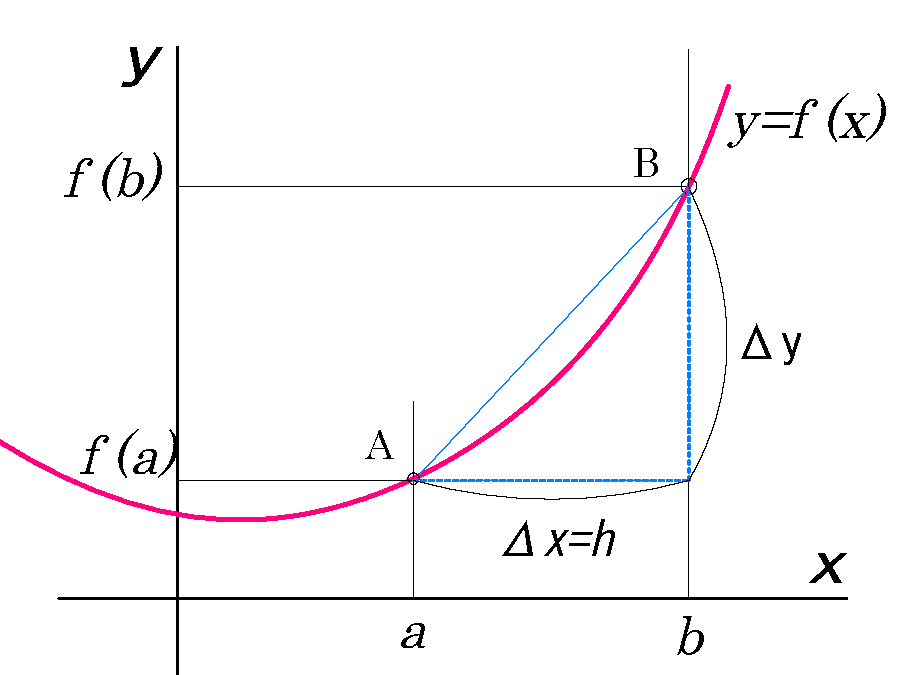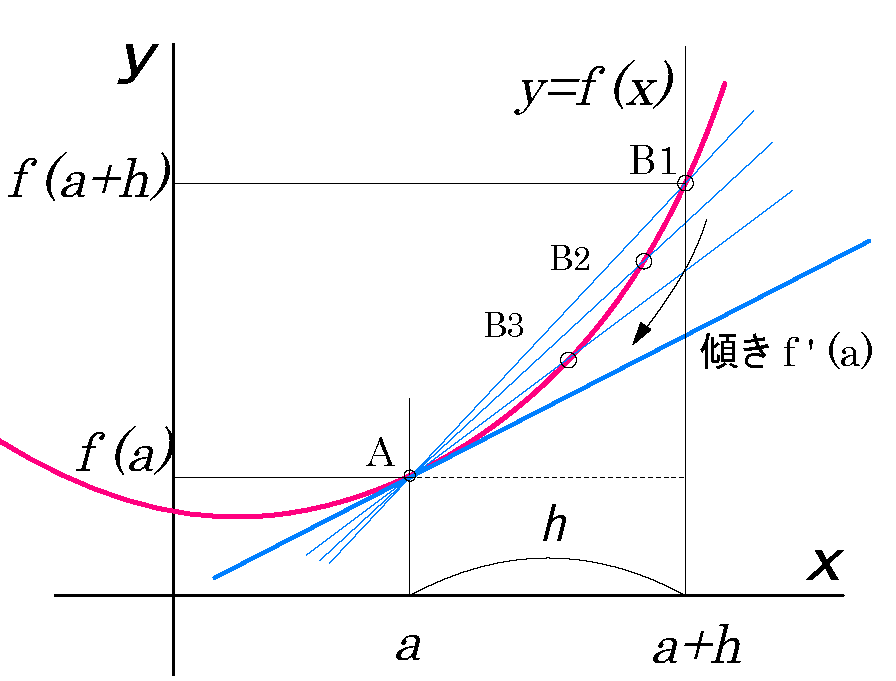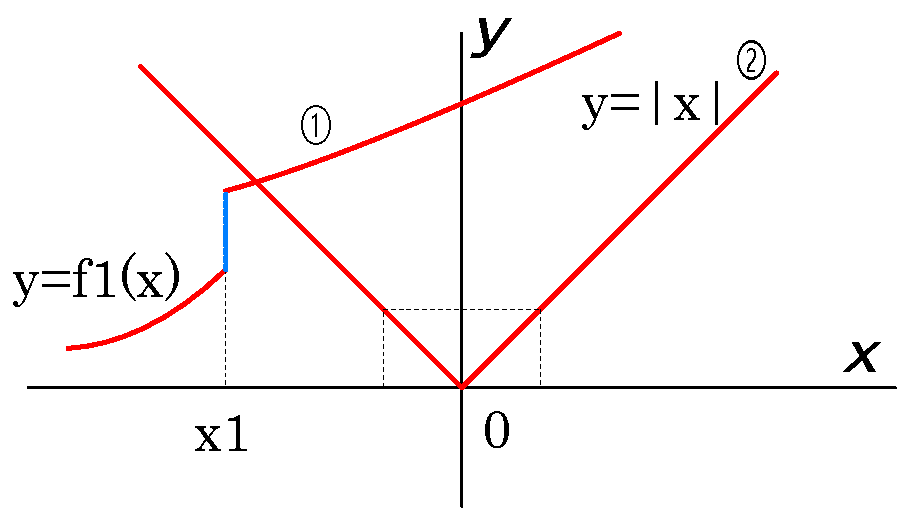導出には次の式を使う。
➀
\( sinα-sinβ=2cos \frac{α+β}{2} sin\frac{α-β}{2} \)
【参考先】
➀\( \displaystyle \lim_{ x \to 0} \frac{sin\ x}{x}=1 \)
証明なしで認めて下さい。
\( f'(x)=(sin x)'=\displaystyle \lim_{h \to 0} \frac{sin(x+h)-sin x}{h}\)
➀より、予め下式を用意しておく。
\( x+h=α,\ x= β \)
\( \frac {α+β}{2}=x+\frac{h}{2}\)
\( \frac {α-β}{2}= \frac{h}{2}\)
\( f'(x)=(sin x )'=\displaystyle \lim_{ h \to 0} \frac{sin(x+h)-sin x}{h}\)
\( = \displaystyle \lim_{ h \to 0}\ [ \frac{1}{h} (sin\ α - sin\ β)\ ]\)
\( = \displaystyle \lim_{ h \to 0}\ [ \frac{1}{h}\ \{ 2cos (\frac{α+β}{2})\ sin (\frac{α-β}{2})\ \}\ ]\)
\( = \displaystyle \lim_{ h \to 0}\ [ \frac{1}{h}\ \{ 2cos\ (x+ \frac{h}{2} ) \ sin ( \frac{h}{2})\ \}\ ]\)
\( = \displaystyle \lim_{ h \to 0}\ [ \ \{ cos\ (x+\frac{h}{2} )\} \ \{2\frac{1}{h} sin( \frac{h}{2})\ \} \ ]\)
\( = \displaystyle \lim_{ h \to 0}\ [ \ \{ cos\ (x+\frac{h}{2} ) \} \)
\( \{ \frac{1}{\frac{h}{2}} sin( \frac{h}{2})\ \} \ ] \)
\( \frac{h}{2}=t \) とおくと
\( = \displaystyle \lim_{ t \to 0}\ [ \ \{ cos\ (x+t) \} \)
\( \{ \frac{sin(t)}{t} \} ] \)
\( =\underline{ cos\ x \cdot 1= cos\ x } \)
導出には次の式を使います。
③
\( cosα-cosβ=- 2sin \frac{α+β}{2} sin\frac{α-β}{2} \)
【参考先】
\( f'(x)=(cos\ x )'\) \(= \displaystyle \lim_{ h \to 0} \frac{cos\ (x+h) - cos\ x}{h} \)
\( = \displaystyle \lim_{ h \to 0}\ \frac{1}{h} [cos\ (x+h) - cos\ x ]\)
\( = \displaystyle \lim_{ h \to 0}\ -2\frac{1}{h} [sin\ (\frac{α+β}{2}) sin\ (\frac{α-β}{2}) ]\)
以下、上記の(2)項と同様に式を展開していきます。
\( = \displaystyle \lim_{ h \to 0}\ -2\frac{1}{h} [sin\ (x+\frac{h}{2}) sin\ (\frac{h}{2}) ]\)
\( = \displaystyle \lim_{ h \to 0}\ -\frac{1}{h} [sin\ (x+\frac{h}{2}) \frac{2}{h} sin\ (\frac{h}{2}) ]\)
\( \frac{h}{2}=t \) とおくと
\( = \displaystyle \lim_{ t \to 0}\ -\frac{1}{h} [sin\ (x+t) \ \frac {sin\ (t)}{t} ]\)
\( =\underline{ -sin\ x \cdot 1= -sin\ x }\)





